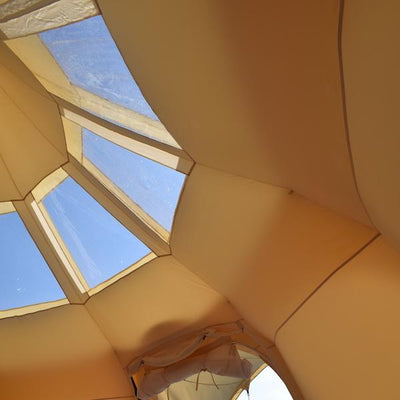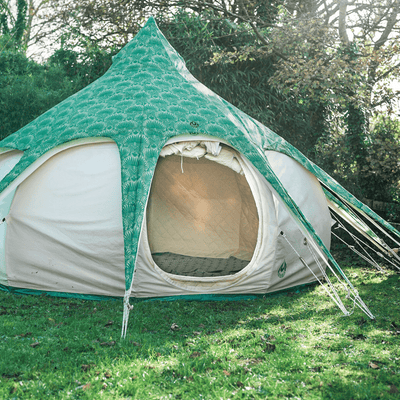
Camping in the UK during lockdown calls for socially-distanced places in which to pitch up, so we’ve naturally found ourselves regularly taking our Stargazer tents out of the city and watching the night skies through its transparent roof.
We’ve been keeping a watchful eye on the calendar to check for space events, trying our hand at a spot of astrophotography, and using apps to teach the youngsters about constellations.
Here are ten things we’ve learned on our stargazing camping trips over the past few months!
The Perseids meteors are the headlining act in July
Between 17th July and 24th August each year, we keep a keen eye for the Perseids meteor showers. These are known for being some of the brightest meteors all year round. Who knew bits of rock burning up in the atmosphere could be so pretty
They’re due to peak around mid-August. Check the lunar calendar for when the moon is in its crescent (‘least full’) phase, as there’ll be less natural light pollution. Also, look out for fireballs (extra-bright meteors).

Stargazing apps: sat-nav for the stars on rainy nights
There’ve been a few nights where the weather’s not been too kind, and though our Stargazer tents are water-resistant, the transparent panels in the roof don’t have windscreen wipers (yet). That’s where stargazing apps save the day (well… night).
A decade after its release, Star Walk (on Android and iOS) is still going strong, overlaying maps of planets and constellations on top of your smartphone camera’s image. Always awe-inspiring, and it’s helped us memorise stuff for when the night skies clear up again.
Take a powerpack to keep everything charged up.
What to spot with the naked eye (without beer goggles)
When you’ve used apps to memorise constellations, it gets way easier to find stuff. We’ve planned a few outings around ‘oppositions’ — when planets are most opposite the sun, and illuminated the brightest. Jupiter’s is typically around the middle of July. Saturn usually follows a few days later.
Something we’d never previously considered: booze inhibits how your eyes adapt to the dark. Wait until you’ve spied some planets before cracking open a cold one and lighting the stove to cook some midnight snacks.

Spot the station: looking for NASA’s home in the sky
While we’re talking naked-eye stargazing, NASA’S International Space Station (ISS) can be spotted passing overhead almost nightly, if you know to look for. Check spotthestation.nasa.gov, pop in a postcode near your camping spot, and prep for a sighting.
Spot Starlink (while you can)
SpaceX’s chains of Starlink satellites were built to bring Internet access to the most remote corners of Earth, and only recently started going into orbit over the past five years. We’ve used findstarlink.com to know when to see it from where we’re pitching up.
This is a bit of a temporary one. Some of SpaceX’s more recent Starlink launches have special shields which make them less reflective and harder to see. Astronomers got a bit miffed that the satellites kept interrupting their work.
Binoculars vs. telescopes
Most nights, we‘ll have a telescope looking up through the Stargazer tent’s see-through roof and a pair of binoculars on the table beside the entrance. The telescope has stronger magnification, so it’ll see further and focus more sharply on fine details and textures.
The binoculars are for when we spot something with the telescope and want to roll up the insect mesh and run outside to follow its movement towards the horizon. Binoculars feel more natural for this. Not quite as long-range, but using both eyes gives a deeper, more 3D view than the telescope.
It all comes down to what you want. Telescopes take less effort to hold, and give a superior image. Binoculars are more mobile, feel more natural, and are fun to pass around!
Astrophotography for beginners
Every time we check astronomy blogs for info on what to look for on our next trip, we see those mind-boggling nighttime photos of light trails filling the sky. It turns out that taking the first step towards snapping pics like those isn’t too much of a challenge.
Any digital camera with a ‘Manual’ mode will let you dip your toes in the pool of astrophotography. You’ll just need to know a few terms:
- ‘Aperture’ is how wide the blades in your lens open when you take a photo. Wider = more light in = brighter photo and shorter focus distance. More closed = less light = darker photo and longer focus distance. Go as wide as you can on your camera (e.g. f/2.8) — you’ll want as much light to get into your camera as possible, what with it being midnight!
- ‘Shutter speed’ is how long those blades stay open. Shorter shutter speed = sharper image. Longer shutter speed = blurrier image (as things will move around while the photo’s being taken). This is where the magic happens. If you put your camera on a tripod and shoot with a shutter speed of, say, five seconds, you’ll start seeing stars appear as light trails in your photos, as your camera turns with the Earth’s rotation. You’re literally disproving the Flat Earth theory with your pictures. Be proud.
- ‘ISO’ is essentially the sensitivity of your camera to light. Set this to somewhere between 800 and 1600. Also, search up how to set your camera model to shoot in
- ‘RAW’, if possible — this format will give you more options when editing later on, so you’ll be able to sharpen up the stars, increase the contrast between bright star trails and the darkness of space, and dehaze interrupting clouds.
Covering these basics puts you on the road towards taking hours-long exposures like pro astrophotographers. We’re quickly finding it to be one of our favourite ways to remember our stargazing camping trips. Be sure to take a powerpack to keep everything juiced up.

Shop By Style
Tents For Life, Not For Landfill
As part of our mission to rid the world of disposable tents we have chosen the highest quality materials, components and manufacturing processes. This together with the elegant design, affording maximum headroom, adds up to a highly desirable, flexible, portable and durable living space that you can enjoy over and over again and that, with care, can last a lifetime.
















